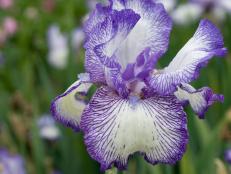How to Keep Tulips from Drooping
Expert tips for keeping cut tulips straight and tall.

Image courtesy of Flower Muse

Whether you buy them or grow them from bulbs, tulips bring a splash of colorful elegance. Fresh-cut tulips are among the most popular flowers used for weddings or arranged in a vase to brighten any room. Unlike many flowers, this member of the Liliaceae family will continue to grow up to two inches after cutting when kept in a vase, but with a pliable stem and heavy blooms, though, tulips are prone to bend and droop as a result of gravity and phototropism, a response that causes the flower to orient towards light.
Planting and Caring for Tulips
Tulips bring some of the earliest color to the late winter garden. Learn how to plant tulip bulbs and care for these flowers that signal warmer, better days are on the way.
These natural conditions and the tendency of some varieties of tulips bloom downward make tulips prone to drooping, but other issues can exacerbate droop. Although droop is unavoidable when displaying cut tulips, steps may be taken to reduce the dreaded droop and keep your bouquet looking fresh and beautiful. Flower Muse, purveyors of farm-direct tulips and other flowers, shares these tips to combat some of the drooping issues common to cut tulips.
Proper Hydration
Cut tulips should be kept in water and may take a few hours to fully hydrate. If you’ve received tulips wrapped in plastic, leave the bouquet in its wrap for the first few hours or overnight to keep the stems upright as they take in water. Take care to avoid getting the blooms wet to minimize the potential for premature molding.
Diffused Light
Tulips naturally seek light and will crane and bend toward the source. Find a spot for your vase out of direct sunlight or rotate the vase regularly to avoid phototropic droop. Direct sunlight will also significantly reduce the vase-life of cut flowers. As drooping increases, tulips may be positioned directly beneath a dominant light source to reduce leaning.
Stem Support
Arrange tulips in a taller, narrower vase. A vessel that supports most of the stem length will help inhibit bending.
A Fresh Cut
Tulips continue to grow after they have been cut, contributing to droop. Regularly trim the end of stems and remove any excess leaves. Once trimmed, replace the water with fresh, cool water before returning the tulips to the vase. Lightly wrap the tops of stems with paper for a few hours after a fresh cut to keep them straight and hasten recovery.
Embrace the Droop
These tips can reduce excessive bending in your beautiful bouquet and help extend their life, but as they age, drooping is an inevitable fact of displaying freshly cut tulips. Eventually, it’s time to embrace the elegant and graceful curve of the stems as they arc over the confines of the vase.














































